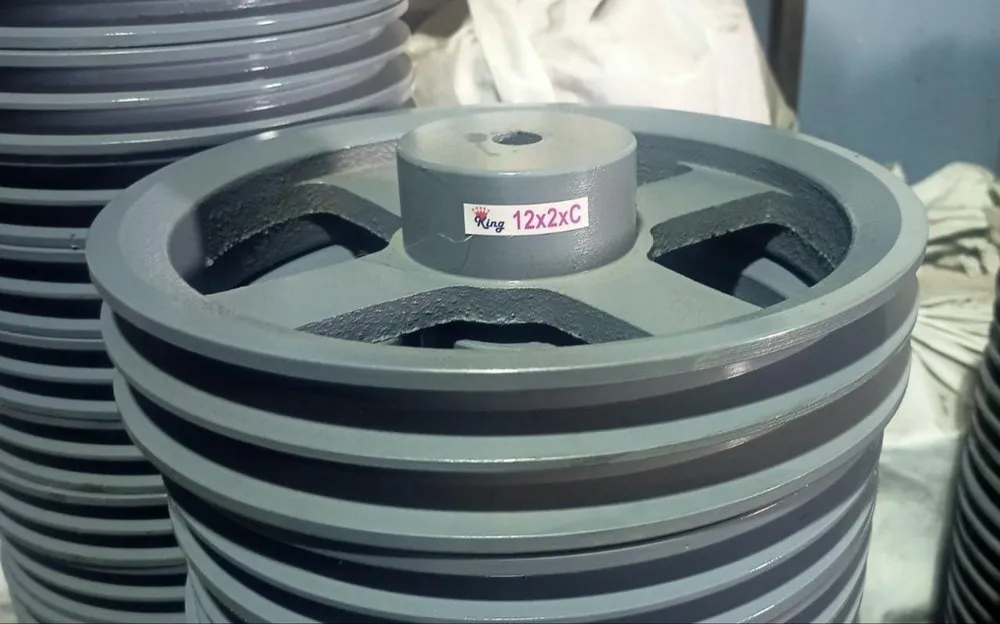Agricultural pulleys are vital components in farming machinery, facilitating power transmission and improving work efficiency. However, their effective use is often overlooked, leading to suboptimal performance and decreased productivity. In this article, we will explore key considerations and best practices for utilizing agricultural pulleys correctly. By understanding their functions, selecting the right pulleys, and implementing proper maintenance and operation techniques, farmers can maximize the potential of their equipment, optimize work efficiency, and achieve better agricultural outcomes.
Understanding Agricultural Pulleys and Their Functions:
Before delving into their correct usage, it is essential to understand the functions of agricultural pulleys. These pulleys are used in various applications, such as driving conveyor systems, operating machinery attachments, and controlling the speed of rotating components. By utilizing different pulley sizes and configurations, farmers can achieve the desired power transmission and adapt to specific agricultural tasks. Familiarize yourself with the types of agricultural pulleys available, including fixed, variable, and step pulleys, to determine the most suitable option for your needs.
Selecting the Right Agricultural Pulleys:
Choosing the appropriate agricultural pulleys is crucial for optimal performance. Consider factors such as load requirements, speed ratios, and environmental conditions when selecting pulleys. Ensure that the pulley materials are durable and resistant to corrosion and abrasion, especially when working in harsh agricultural environments. Additionally, verify the compatibility between the pulleys and the drive belts to ensure efficient power transmission. Consulting with experts or pulley manufacturers can provide valuable insights and guidance in selecting the right pulleys for specific farming applications.
Proper Installation and Alignment:
Correct installation and alignment are critical for the effective use of agricultural pulleys. Improper alignment can lead to belt slippage, premature wear, and reduced power transmission efficiency. Follow the manufacturer’s guidelines for pulley installation, ensuring proper alignment between the pulley and the drive shaft. Regularly check and adjust the tension of the belts to maintain optimal performance and prevent excessive wear. Properly aligning pulleys not only enhances work efficiency but also extends the lifespan of the pulley system.
Regular Maintenance and Lubrication:
To maximize the longevity and performance of agricultural pulleys, regular maintenance is essential. Implement a maintenance schedule that includes periodic inspections, cleaning, and lubrication of pulleys. Regularly check for signs of wear, such as belt fraying or pulley damage, and replace worn-out components promptly. Lubricate pulley bearings as per manufacturer recommendations to reduce friction and prevent premature failure. Regular maintenance practices will not only improve work efficiency but also minimize unexpected breakdowns and costly repairs.
Safety Considerations:
When using agricultural pulleys, prioritizing safety is paramount. Ensure that all safety guards and shields are in place to prevent accidental contact with moving parts. Familiarize yourself with safety procedures and guidelines provided by equipment manufacturers. Train operators on proper usage and safety protocols, emphasizing the potential risks associated with pulley systems. Conduct regular safety inspections to identify and address any potential hazards promptly.
Conclusion:
Agricultural pulleys are indispensable components in farming machinery, and their correct usage is instrumental in improving work efficiency. By understanding their functions, selecting the right pulleys, ensuring proper installation and alignment, conducting regular maintenance, and prioritizing safety, farmers can optimize the performance of their equipment and enhance overall work efficiency. Taking these considerations into account will not only increase productivity but also contribute to the longevity of agricultural pulleys, resulting in improved agricultural outcomes and a more successful farming operation.
CONTINUE READING
Related Posts
In the world of industrial manufacturing, the efficiency and reliability of transmission systems are critical to the success of any […]
In industrial settings, a smooth and quiet power transmission system is crucial for productivity, safety, and worker comfort. V Belt […]
Splines play a critical role in mechanical power transmission systems, enabling rotational motion and torque transfer between mating components. These […]





